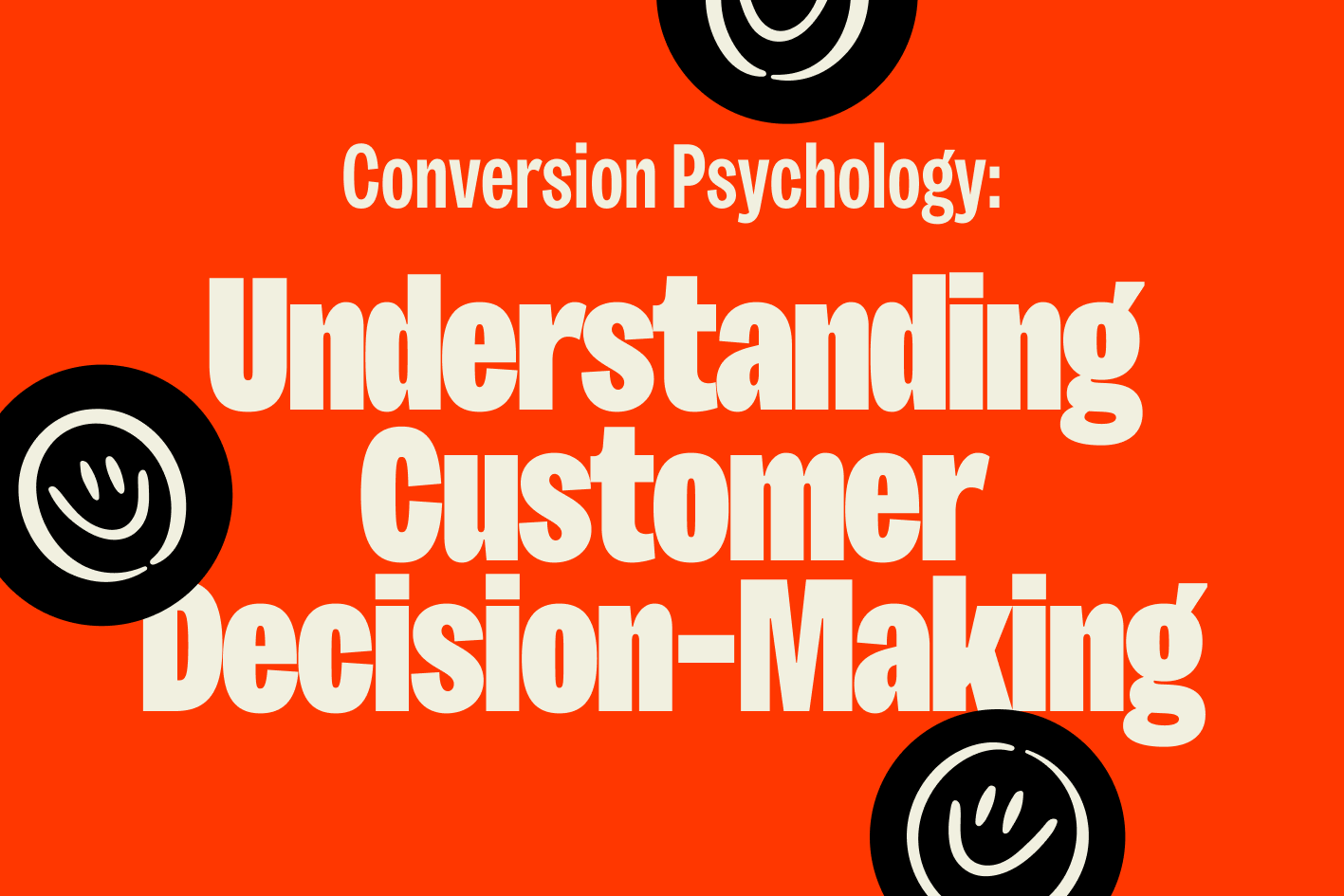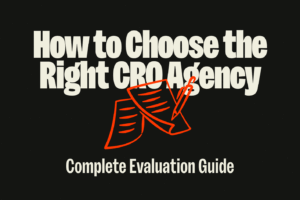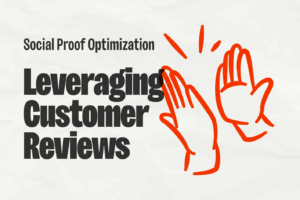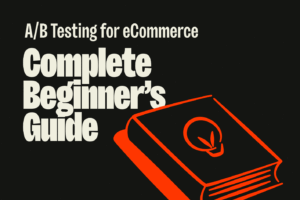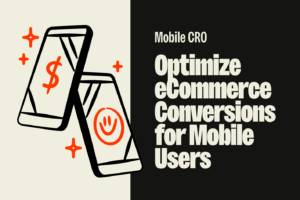Customer decision-making follows predictable psychological patterns that can be leveraged to improve conversion rates significantly. Research shows that 95% of purchasing decisions occur subconsciously, with emotions playing a more decisive role than rational evaluation. Understanding these psychological principles allows eCommerce brands to design experiences that align with natural human behavior, resulting in conversion improvements of 20-40% when applied strategically.
Table of Contents
The Science Behind Customer Purchase Decisions
Human decision-making combines rational evaluation with emotional responses, often in ways that customers themselves don’t fully recognize or understand.
Dual-Process Theory in eCommerce
Nobel Prize-winning psychologist Daniel Kahneman’s dual-process theory explains how customers make purchasing decisions through two distinct mental systems.
System 1 (Fast, Automatic) Thinking: This system operates quickly and unconsciously:
- Instant emotional responses: First impressions and gut reactions
- Pattern recognition: Familiar layouts and trusted design elements
- Heuristic shortcuts: Quick decision rules like “expensive equals quality”
- Impulse purchasing: Immediate gratification and emotional purchases
System 2 (Slow, Deliberate) Thinking: This system requires conscious effort and energy:
- Detailed comparison: Feature analysis and price comparison
- Risk assessment: Carefully weighing pros and cons
- Future planning: Considering long-term implications
- Complex calculations: Budget analysis and value assessment
Design Strategies for Each System: Effective eCommerce design addresses both decision-making systems:
- System 1 optimization: Clear visual hierarchy, familiar patterns, emotional imagery
- System 2 support: Detailed specifications, comparison tools, comprehensive reviews
- System coordination: Emotional appeal that leads to rational justification
The Role of Emotions in Purchase Decisions
Neuroscience research reveals that customers with damaged emotional processing centers struggle to make any decisions, highlighting emotion’s fundamental role in choice-making.
Emotional Triggers That Drive Action:
- Fear: Scarcity, missing out, making wrong choices
- Joy: Success, achievement, positive outcomes
- Excitement: New possibilities, improvements, discoveries
- Trust: Safety, reliability, expert validation
Emotional Design Implementation: Visual and content elements trigger specific emotional responses:
- Color psychology: Red for urgency, blue for trust, green for growth
- Typography choices: Bold fonts for confidence, script fonts for elegance
- Image selection: Happy customers, successful outcomes, aspirational lifestyles
- Language tone: Confident, supportive, understanding, exciting
Psychological Principles for Conversion Optimization

Established psychological principles provide reliable frameworks for improving conversion rates across different industries and customer segments.
Social Proof and Conformity
Humans naturally look to others’ behavior for guidance in uncertain situations, making social proof one of the most powerful conversion drivers.
Types of Social Proof in eCommerce:
- User reviews and ratings: Authentic customer experiences and evaluations
- Testimonials: Detailed success stories and recommendations
- Usage statistics: “10,000+ satisfied customers” and similar metrics
- Expert endorsements: Professional recommendations and certifications
Implementation Strategies: Effective social proof requires strategic placement and authentic presentation:
- Prominent positioning: Place social proof near decision points
- Specific details: Concrete numbers and specific benefits mentioned
- Diverse representation: Various customer types and use cases
- Recent activity: Current reviews and real-time usage indicators
Psychological Impact Analysis: Research shows social proof increases conversions by 15-30% when implemented effectively, with the strongest impact occurring when customers see people similar to themselves making purchases.
Scarcity and Loss Aversion
Loss aversion research demonstrates that people feel the pain of losing something twice as strongly as the pleasure of gaining something equivalent.
Scarcity Implementation Methods:
- Limited quantity: “Only 3 left in stock” creates urgency
- Time constraints: “Sale ends in 24 hours” motivates quick action
- Exclusive access: “Members only” increases perceived value
- Seasonal availability: “Limited time seasonal item” suggests rarity
Ethical Scarcity Practices: Scarcity must be genuine to maintain trust and long-term relationships:
- Honest inventory tracking: Accurate stock level reporting
- Legitimate time constraints: Real deadlines and limited-time offers
- Authentic exclusivity: Genuine member benefits and early access
- Transparent communication: Clear explanation of limitations
Authority and Expertise
People follow the guidance of perceived experts and trusted authorities, making authority signals crucial for conversion optimization.
Authority Signal Types:
- Professional credentials: Certifications, education, experience
- Industry recognition: Awards, media mentions, peer acknowledgment
- Customer validation: High ratings, repeat customers, loyalty indicators
- Content expertise: Educational resources, helpful guidance, problem-solving
Building Perceived Authority: Authority develops through consistent demonstration of expertise:
- Educational content: Helpful guides, tutorials, industry insights
- Professional presentation: High-quality design, clear communication
- Thought leadership: Original research, industry commentary, trend analysis
- Customer success: Case studies, results documentation, outcome tracking
Cognitive Biases in eCommerce Decision Making

Understanding cognitive biases helps predict and influence customer behavior patterns.
Anchoring Bias and Price Perception
The first price customers see sets an expectation anchor that influences all subsequent price evaluations.
Anchoring Strategies:
- Premium positioning: Show higher-priced options first to anchor expectations
- Strike-through pricing: Display original price alongside discounted price
- Bundle comparisons: Present package deals against individual item totals
- Tier positioning: Use premium tiers to make standard options appear reasonable
Price Psychology Applications: Strategic pricing presentation influences perceived value:
- Left-digit bias: $9.99 feels significantly cheaper than $10.00
- Charm pricing: Odd-ending prices (.99, .95) suggest bargains
- Prestige pricing: Even numbers ($100, $500) convey premium quality
- Reference pricing: Show competitor prices or “typical” market rates
Choice Architecture and Decision Fatigue
Too many options can overwhelm customers and reduce conversion rates, a phenomenon known as the paradox of choice.
Simplification Strategies:
- Progressive disclosure: Reveal options gradually based on customer needs
- Recommended selections: Highlight popular or staff-recommended choices
- Smart defaults: Pre-select most common or beneficial options
- Category organization: Group similar options to reduce cognitive load
Decision Fatigue Prevention: Reducing mental effort increases completion rates:
- Guided selection: Quizzes or tools that narrow options
- Expert curation: Pre-selected collections based on expertise
- Popular choice highlighting: Show what most customers choose
- Clear differentiation: Make option differences obvious and meaningful
Trust and Credibility Psychology

Trust forms the foundation of online purchasing decisions, as customers must overcome natural skepticism about unfamiliar brands.
Trust Signal Implementation
Psychological trust develops through multiple reinforcing signals that demonstrate reliability and competence.
Visual Trust Indicators:
- Professional design: Clean, modern layouts suggest competence
- Security badges: SSL certificates and payment security indicators
- Contact information: Phone numbers, addresses, and support availability
- About page storytelling: Human faces and authentic business stories
Behavioral Trust Building: Actions demonstrate trustworthiness more powerfully than claims:
- Responsive customer service: Quick, helpful responses to inquiries
- Transparent policies: Clear shipping, returns, and privacy policies
- Consistent communication: Regular updates and reliable information
- Problem resolution: How issues are handled when they arise
Risk Reduction Psychology
Customers naturally seek to minimize potential negative outcomes, making risk reduction crucial for conversion optimization.
Risk Mitigation Strategies:
- Money-back guarantees: Remove financial risk from purchase decisions
- Free return policies: Eliminate concerns about fit or satisfaction
- Product warranties: Reduce long-term performance worries
- Clear expectations: Detailed shipping times and product information
Psychological Safety Creation: Safe purchasing environments encourage experimentation and repeat purchases:
- Familiar payment methods: Accepted credit cards and digital wallets
- Secure checkout process: Clear security indicators and trusted payment processors
- Customer support accessibility: Easy access to help when needed
- Social validation: Reviews and testimonials from similar customers
Urgency and Motivation Psychology
Effective urgency creation motivates action without damaging trust or customer relationships.
Creating Healthy Urgency
Psychological urgency must feel authentic and beneficial rather than manipulative.
Legitimate Urgency Sources:
- Seasonal relevance: Holiday deadlines and seasonal needs
- Inventory constraints: Genuine stock limitations and popular item demand
- Event-based timing: Sales events, product launches, special occasions
- Personal milestones: Birthdays, anniversaries, achievement celebrations
Urgency Communication Methods: Strategic messaging creates motivation without pressure:
- Deadline clarity: Specific end dates and times for offers
- Inventory visibility: Real stock levels and availability updates
- Benefit emphasis: Focus on what customers gain rather than lose
- Choice preservation: Maintain customer autonomy in decision-making
Motivational Triggers and Desires
Understanding core human motivations enables more effective messaging and positioning.
Fundamental Human Motivations:
- Problem solving: Addressing pain points and frustrations
- Goal achievement: Supporting ambitions and aspirations
- Status enhancement: Improving social position and recognition
- Convenience seeking: Saving time and reducing effort
Motivation Alignment Strategies: Product positioning should connect with customer motivations:
- Problem-solution framing: Clearly identify problems and present solutions
- Aspiration connection: Link products to desired future states
- Social benefit highlighting: Show how purchases enhance social standing
- Convenience demonstration: Emphasize time savings and ease of use
Personalization and Individual Psychology
Individual differences require personalized approaches to maximize conversion effectiveness.
Psychological Segmentation
Different personality types and behavioral patterns respond to different messaging and design approaches.
Behavioral Pattern Recognition: Customer behavior reveals psychological preferences:
- Detail-oriented customers: Prefer comprehensive information and specifications
- Impulse-driven customers: Respond to visual appeal and emotional triggers
- Social customers: Influenced by reviews, ratings, and social proof
- Independent customers: Prefer self-service options and autonomous decision-making
Personalization Implementation: Technology enables individualized experiences:
- Browsing behavior tracking: Adapt content based on pages visited
- Purchase history analysis: Recommend relevant products and categories
- Engagement pattern recognition: Adjust communication frequency and timing
- Preference learning: Remember choices and optimize future interactions
Customer Journey Psychology
Customer psychology changes as they move through different stages of the purchasing process.
Awareness Stage Psychology: Early-stage customers need education and problem recognition:
- Problem identification: Help customers recognize needs they may not have articulated
- Solution awareness: Introduce potential solutions and approaches
- Trust building: Establish credibility through helpful content
- Relationship initiation: Begin positive brand associations
Decision Stage Psychology: Ready-to-purchase customers need confidence and final reassurance:
- Feature comparison: Detailed specifications and competitive advantages
- Risk mitigation: Guarantees, returns, and support assurances
- Social validation: Reviews and testimonials from similar customers
- Decision support: Tools and guidance to finalize choices
Ethical Considerations in Conversion Psychology
Psychological principles must be applied ethically to build sustainable customer relationships.
Ethical Persuasion vs Manipulation
The distinction between helpful influence and harmful manipulation determines long-term business success.
Ethical Application Principles:
- Customer benefit focus: Ensure psychological techniques serve customer interests
- Honest communication: Avoid deceptive practices and false claims
- Transparent intentions: Be clear about business motivations and objectives
- Respectful persuasion: Honor customer autonomy and decision-making rights
Manipulation Warning Signs: Certain practices cross ethical boundaries:
- False scarcity: Creating artificial limitations to pressure customers
- Deceptive social proof: Fake reviews, testimonials, or usage statistics
- Hidden costs: Psychological pricing that conceals true expenses
- Exploiting vulnerabilities: Taking advantage of customer weaknesses or desperation
Building Genuine Value and Trust
Sustainable conversion optimization prioritizes authentic value creation over short-term manipulation.
Long-term Relationship Building:
- Authentic customer testimonials: Real reviews and honest feedback
- Fair value exchange: Reasonable pricing for genuine quality and service
- Consistent communication: Reliable information and transparent policies
- Customer success focus: Prioritizing customer outcomes over immediate sales
Trust-Building Practices: Genuine trust develops through consistent positive experiences:
- Promise fulfillment: Delivering on commitments and expectations
- Problem resolution: Handling issues fairly and promptly
- Value demonstration: Proving worth through quality and service
- Honest marketing: Accurate representations and realistic expectations
Professional Psychology-Based Optimization Services
Complex psychology application often requires expert analysis and implementation.
When to Apply Psychological Principles
Professional psychology-based optimization becomes valuable when:
- Conversion rates plateau: Traditional optimization reaches limits
- Customer behavior analysis: Complex patterns require expert interpretation
- Multi-segment optimization: Different customer types need specialized approaches
- Ethical implementation: Ensuring psychological techniques serve customer interests
Expected Performance Improvements: Psychology-based conversion optimization typically achieves:
- 20-40% conversion rate improvements through behavioral principle application
- 15-30% increase in average order value via psychological pricing and bundling
- 25-50% improvement in customer engagement through motivation-aligned messaging
- 30-60% reduction in cart abandonment through psychology-informed checkout design
How Glued Integrates Conversion Psychology into CRO Strategies: Our approach combines behavioral research, customer psychology analysis, ethical implementation frameworks, and systematic testing to ensure psychological principles improve both conversion rates and customer satisfaction sustainably.
Ready to leverage customer psychology for ethical conversion improvement? Get a free psychology-based CRO audit to identify behavioral optimization opportunities and create a customer-focused psychology strategy.
